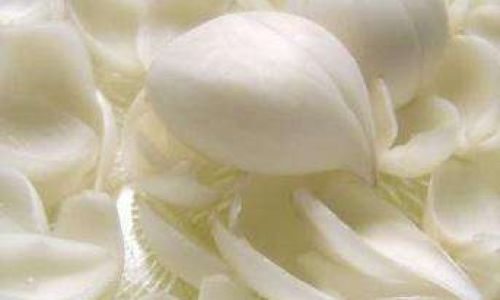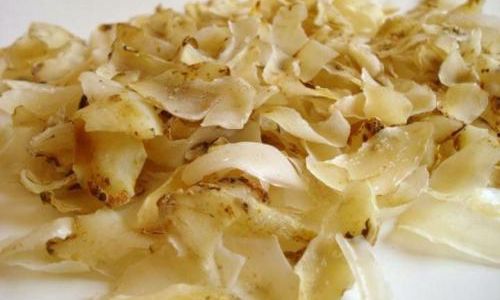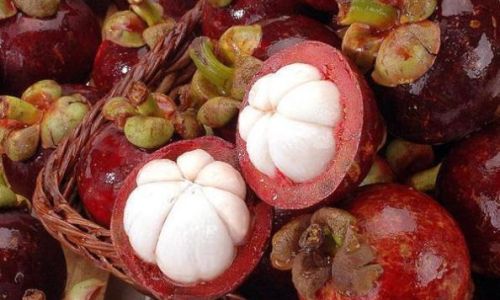Table of content
Lily bulbs, known scientifically as Lilium species, have been a culinary and medicinal staple in many Asian cultures for centuries. Revered for their delicate flavor, crisp texture, and potential health benefits, these underground stems are commonly used in soups, stir-fries, and traditional dishes. However, a recurring question among home cooks and food enthusiasts is: Why do cooked lily bulbs sometimes taste sour, and are they safe to eat? This article delves into the science behind lily bulbs’ flavor profiles, the causes of sourness, and the safety considerations for consumption.

Understanding Lily Bulbs: Botanical and Culinary Context
Lily bulbs belong to the genus Lilium, which includes over 100 species. While many lilies are ornamental, several varieties are cultivated for culinary use, such as the Lanzhou lily (Lilium davidii var. unicolor) and the Tiger lily (Lilium lancifolium). These edible lilies are rich in nutrients like vitamins B and C, dietary fiber, and antioxidants, making them a sought-after ingredient in health-conscious diets.
In traditional Chinese cuisine, lily bulbs are often referred to as baihe (百合) and are prized for their ability to “clear heat” and “moisten the lungs,” according to Traditional Chinese Medicine (TCM). They are commonly added to sweet soups, stir-fried with vegetables, or dried for use in herbal teas. However, their flavor can vary significantly based on species, preparation method, and storage conditions.
The Sour Taste Mystery: Natural or Alarming?
When lily bulbs are cooked, they typically develop a mild, slightly sweet taste with a hint of bitterness. However, encountering a sour or acidic flavor can be confusing and concerning. Several factors may contribute to this unexpected tanginess:
-
Species Variation:
Not all lily bulbs are created equal. Some species, such as the Tiger lily (Lilium lancifolium), naturally contain higher levels of saponins—glycosidic compounds that can impart a bitter or soapy taste. While saponins are generally harmless when consumed in moderate amounts, their bitterness might be misinterpreted as sourness by some palates. -
Improper Storage:
Lily bulbs are highly perishable. If stored in damp or warm conditions, they may ferment or spoil, leading to off-flavors, including sourness. Spoilage can also cause texture changes, such as sliminess or discoloration, which are clear indicators of inedibility. -
Chemical Treatments:
Commercially grown lily bulbs are sometimes treated with preservatives or bleaching agents to extend shelf life or enhance appearance. Residual chemicals from these treatments can alter taste, resulting in acidity or bitterness. -
Overcooking:
Prolonged exposure to heat can break down the bulbs’ natural starches into simpler sugars, which may ferment slightly if cooked in moist environments. This fermentation process can produce lactic acid, contributing to a sour taste. -
Soil and Environmental Factors:
The growing conditions of lily bulbs—such as soil pH, nutrient levels, and pesticide use—can influence their flavor profile. Bulbs grown in acidic soils or exposed to certain fertilizers might develop a tangy undertone.
Safety Considerations: When Sourness Indicates Danger
While a mild sour taste does not automatically render lily bulbs inedible, it is crucial to distinguish between natural flavor variations and signs of spoilage or toxicity. Here’s how to assess safety:
Visual and Textural Clues
- Discoloration: Fresh lily bulbs should be firm, ivory-white, and blemish-free. Grayish patches, mold, or brown spots indicate decay.
- Texture: Spoiled bulbs may feel mushy, slimy, or excessively soft when squeezed.
Olfactory Checks
- Foul Odor: Rotting lily bulbs emit a pungent, fermented smell. Fresh bulbs have a subtle, earthy aroma.
Taste Test (Caution Advised)
- If the sourness is accompanied by bitterness, tingling, or numbness in the mouth, spit out the bulb immediately. These symptoms could signal the presence of alkaloids like colchicine, which are toxic in high doses.
Species Identification
- Edible vs. Toxic Lilies: Never assume all lilies are safe to eat. Ornamental varieties like the Easter lily (Lilium longiflorum) or Daylily (Hemerocallis) may contain higher levels of toxic compounds. Always source bulbs from reputable suppliers and verify their edibility.
Preparation Techniques to Mitigate Sourness
If the lily bulbs are confirmed safe but taste overly sour, proper preparation can neutralize the acidity and enhance their natural sweetness:
-
Peeling and Soaking:
- Remove the outer scales of the bulb, as they often harbor the highest concentration of bitter compounds.
- Soak the peeled bulbs in cold water for 1–2 hours, changing the water every 30 minutes. This leaches out saponins and reduces bitterness.
-
Blanching:
Briefly boil the bulbs in salted water (1–2 minutes) before rinsing under cold water. Blanching breaks down enzymes that contribute to sourness.

-
Cooking Methods:
- Sweet Pairings: Combine lily bulbs with naturally sweet ingredients like honey, dates, or rock sugar to balance acidity.
- Acid Neutralization: Add a pinch of baking soda to the cooking water. This raises the pH and mellows sour flavors.
- Aromatics: Simmer bulbs with ginger, garlic, or scallions to mask bitterness.
-
Fermentation Control:
Avoid cooking lily bulbs in acidic liquids (e.g., vinegar, tomato sauce) if they already taste sour, as this exacerbates tanginess.
Cultural Perspectives on Lily Bulb Flavors
In traditional cuisines, the slight bitterness of lily bulbs is often intentional. For example, in Chinese sweet soup recipes, the bitterness is believed to “counterbalance” the sweetness, creating a harmonious flavor profile. However, modern palates accustomed to refined sugars may perceive this bitterness as sourness.
In Korean cuisine, lily bulbs (yuri) are sometimes pickled in brine, which introduces a tangy flavor. This process is deliberate and safe, as the salinity inhibits harmful bacteria. However, home-pickled bulbs should be monitored for signs of spoilage.
Scientific Studies on Lily Bulb Safety
Research into lily bulb toxicity primarily focuses on colchicine, a compound found in some Lilium species. Colchicine is used medicinally to treat gout but can be lethal in large doses. A 2018 study published in the Journal of Food Science found that edible lilies like Lilium davidii contain negligible colchicine levels, rendering them safe when consumed in typical culinary amounts. However, ornamental varieties may pose risks if ingested in large quantities.
Another 2020 study in Food Chemistry highlighted the role of saponins in lily bulbs’ bitterness. Researchers concluded that while saponins can cause gastrointestinal discomfort in sensitive individuals, they are largely destroyed by cooking, reducing health risks.
When to Avoid Lily Bulbs Entirely
Despite their culinary appeal, certain groups should exercise caution:
- Pregnant Women: Some animal studies suggest colchicine may affect fetal development, though human data is limited.
- People with Gastrointestinal Disorders: Saponins may exacerbate symptoms like bloating or diarrhea.
- Allergy Sufferers: Rare cases of lily bulb allergies, manifesting as itching or swelling, have been reported.
Conclusion: To Eat or Not to Eat?
The answer hinges on context. If the sourness is mild, the bulbs are fresh, and proper preparation techniques are employed, cooked lily bulbs are generally safe and even nutritious. However, sourness accompanied by spoilage signs, toxicity concerns, or adverse reactions warrants discarding the bulbs immediately.
To enjoy lily bulbs confidently:
- Purchase from trusted sources.
- Store in a cool, dry place.
- Peel, soak, and cook thoroughly.
- Pair with complementary flavors to balance bitterness.
By combining culinary wisdom with scientific awareness, home cooks can transform this humble bulb into a delicious and safe addition to their meals. After all, the key to savoring lily bulbs lies not just in their flavor but in the knowledge that transforms uncertainty into culinary mastery.





0 comments